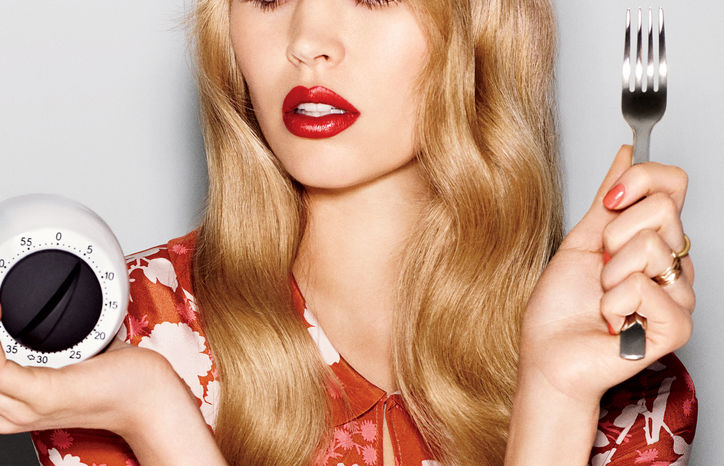DID YOU watch The Brave Little Toaster when you were a kid and think, “Gee, if only my kitchen appliances could talk to me and take me on adventures, my life would be so much better”? No? Neither did we. But that didn’t stop Hapilabs, a company based in Hong Kong, from coming up with just that: kitchen appliances that will actually communicate with you, in this case a fork called the Hapifork. Although we’re not sure how brave it’ll be. More like judge-y, since the device is used to keep track of every bite that comes near your mouth and alert you when it thinks you should take a “break.” AKA “Slow down, you pig!”
This is either going to be the magic wand for people who need to be chaperoned while dining or everyone’s worst nagging nightmare.
Basically, the fork keeps track of how long you’re eating, how many times you put the fork into your mouth, and how long you waited between each bite. If you start eating too “fast,” the fork will let you know with some helpful flashing indicator lights.
Not to be forgotten when your meal is over, the data from your dining experience is uploaded by Bluetooth or USB to your online profile, where all of your data will be stored for you to peruse at your will. If you’re not doing too well with your eating habits, have no fear — the profile will conveniently offer you a coaching program to get you back on track.
The rationale for creating such a device revolves around the idea that when we eat slower, we give our stomachs more time to recognize the limits of our hunger, thereby allowing us to stop eating before we’re overly full, since most scientific authorities agree that it takes about twenty minutes for our brains to start sending signals of fullness to our stomachs. Originally, the Hapifork was developed to be used in medical and clinical settings, but it seems that the company wants the general public to jump on board, hoping the Hapifork, according to them, will help reduce the weight gain, gastric reflux, and digestive issues that can occur from eating too fast.
There’s merit behind the concept, sure, since it would be better for a number of reasons if we weren’t just blindly stuffing our bodies full of calories that we didn’t need. But there are a couple issues. For one thing, a lot of the food we eat doesn’t require a fork. We can’t really imagine people starting to use cutlery to consume their pizza slices, burgers, and sushi. For another thing, not sure if taking a Hapifork on a date or in public at all is going to be a popular choice, or even a convenient one: “Oh don’t mind my blinking fork lighting up this romantic setting, go on with your story!”
If you like the idea of having a reminder — other than the disapproving stares of your dining companions and your own guilt — that you shouldn’t be having that third slice of cheesecake, you can get your very own Hapifork for $99. If that price tag scares you off a bit, don’t worry, it’s worth every penny: the Hapifork comes in a variety of cute colors so you’ll be sure to be the envy of every toddler at the restaurant when you whip it out and start digging in.
Image Credit: Tom Schirmacher


-300x200.jpeg)









-300x241.jpeg)




